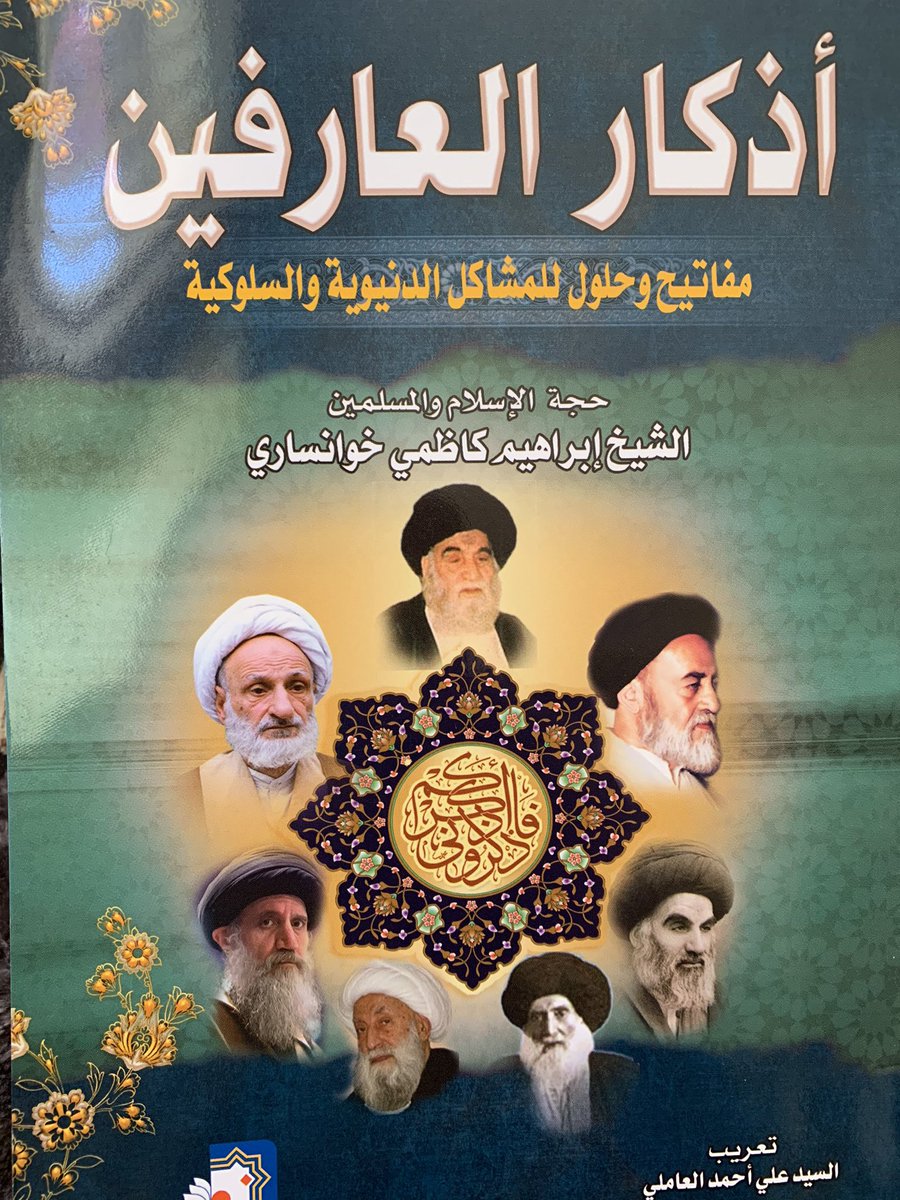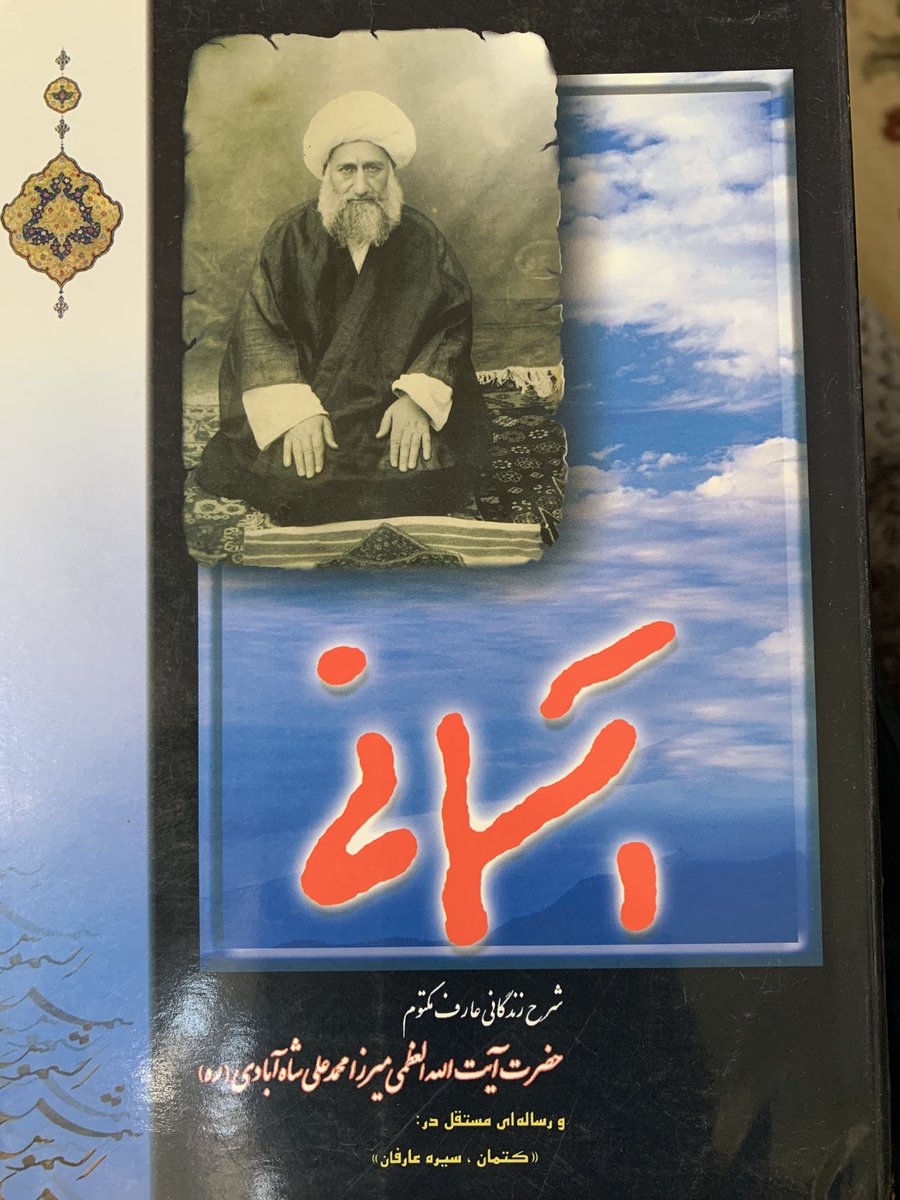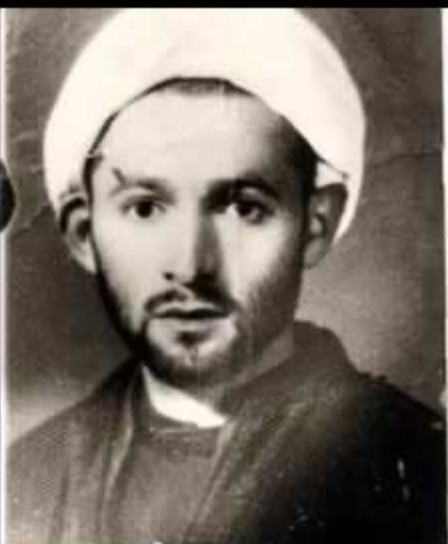@docstobar examines Iranian experiments with metaphysics that question the way in which institutions engage with #occult #scientific #rational #empiricist an embrace of #new_age spirituality and a rise in #irfan and its #empiricismoftheheart - a thread on #irfan in #Iran 1/ 

It shows that our assumption of disenchantment in which the separation from the #scientific from the #occult does not preclude the possibility of the #modern scientist-rammal nor the embrace by the modern empiricist of the illiterate-savant-gnostic-sage 2/
It also suggests that the official seminary’s promotion of a modern viable #Shii_reason clashes with its own #mystical commitments and their popularity 3/
Part 3 of the book is important for this discussion of the friends of God and especially chapter 22 on its politics (after #Khomeini) 4/
The charisma of the circles around Sayyid Ali Qazi (1869-1947), the illiterate gnostic Rajab ‘Ali Khayyat (1883-1961) and Shaykh Ja’far Mojtehedy (1925-1996) are too tempting for political authorities to ignore and they have tried to appropriate them in differing ways 5/ 





Mojtahedy was an important figure for those in #Tehran - a short video on him aparat.com/v/T0xEb 5a/
Generally there are plenty of videos about #irfan often through the official IRIB channels and their programmes such as #Marifat which brought together seminary #mystical traditions with the #Persian #Sufi 5b/
There are differing mystical persuasions - and dont forget the #Sufi orders in Iran and Iraq - but increasingly they are lumped together into a lineage that stems from the ‘ethical school of Najaf’ associated with Qazi 6/
He becomes the archetypical jurist-mystic (faqih-e muta’allih) and more recently followed in that by Ayatollah Bahjat (1916-2009) 6/
Their charisma is coopted by the official political theology that also promotes the ‘mysticism of the leader’ farsi.khamenei.ir/others-dialog?… 7/ 





The popularity of hagiographies of these mystics from the seminary extends to practical manuals of prayer and devotion originally in #Persian and increasingly in #Arabic 8/ 





One publisher which specialises in the hagiographies and works attributed to the figures is the #Tehran based Shams al-shumus which refers both to their illustrious nature and the #Shii normativity of #ImamAliReza 9/ 







The volume on Sayyid Hashim Haddad (d. 1984) and one could argue that Sayyid Muhammad Husayn Tihrani (d. 1994) and his Ruh-e Mujarrad began that trend 11/ 





Finally this volume on Bahjat that sits alongside a large literature now available on his as the mystic jurist 13/ 



Of course not everyone is happy with this appropriation - those engaged in #irfan who want to stay independent, and also those in the seminary opposed to #irfan - it remains to see whether #irfan beyond the seminary including a revival of #Sufis is possible 14/
• • •
Missing some Tweet in this thread? You can try to
force a refresh



















